Residential chestnuts store carbon, reduce soil-harming, native plant killing ag they are mixes not American/Hybrid nuts NOTICE: This blog is not associated with the BuildSoil twitter, but exists to repost key content onto tumblr to facilitate cross platform outreach and hopefully direct new eyes onto the Million Chestnut Project. All posts link back to the original source thread. :)
Don't wanna be here? Send us removal request.
Video
youtube
In the future I see, we will find ourselves with moving & still water everywhere. Rather than hiding water or helping it to move away as quick as possible, we hold it high & prominent in our landscape. Every home connected to water. Catching it and storing it in ponds, using swales, planning better roads...
There are many communities that already are built with this understanding, always the targets of imposed imperial artifice that we call home. It’s sits on top the landscape A machine that turns ecology into its component parts atomizing all of us. Cages sold as homes and towns.
What would we be if our common goal was the improvement of water from the back door outward- the raising of soil, the expansion of the foundations of life?
One example I love is the Satoyama system; an integration of landscapes, with towns, rivers, canals, fields, forests, and wildlife. Here’s one good film on it.
8 notes
·
View notes
Text

There is a real deficit in our culture's knowledge of overall landscape processes. I'm working hard to make sure that people get at least an exposure to the ways that different scales of process interact with each other.
One way this manifests is my first piece of advice in looking at an area of land - "walk down to the creek/river and get a sense of it's form." Oftentimes, I hear: "there is no river or creek" and this shows that they think the land ends at the property boundary. Everywhere is a watershed.
Uplands landscapes are shaped by water processes, and understanding the creek will help you understand what's going on upland. It's also a good idea to get a sense of the ridges- the roof of the watershed. Then walk over to the tops of the valleys.
Find the floodplains, which are supposed to be the areas that rivers flood, in order to release energy and drop sediment. A healthy river pours into a floodplain every couple years. Vegetation in the floodplain should support helping the water spread and soak.
If the river is incised- not allowed to leave it's channel- there is energy not being released during big events, and it will be expressed somehow: probably bad flooding elsewhere, but also further incision and the dropping of the river channel, which takes ground water with it.
A hungry river begins to meander or tear at it's sides, because it has to do something with all the extra energy. Rather than helping build soil like in a healthy flood event, it takes it away.
We can improve water infiltration & the holding capacity of the uplands above a flood plain, to soak & slow that water, to spread it's flow out through the year- so the river has less energy (to cause erosion). Vegetation, soils, meandering swales, ponds, well designed roads, can all move excess water into storage.
#buildsoil#erosion#water table#water conservation#wetlands restoration#river restoration#climate change#ecosystem restoration
1 note
·
View note
Text
Don’t put a lot of energy into absorbing fatalist stories about climate change. We need you to stay wake to reality and engage in even small soilutions.
1 note
·
View note
Text

This thread was a response to the idea that we should put aerosols in the atmosphere. There are solutions we could be putting our energy towards:
Most of the proposed responses to climate change don’t fundamentally address one of the largest sources and solutions to the situation: restoring soil through regenerative agriculture and grazing. Current agriculture is rapidly causing soil to lose carbon- and this is fixable.
the numbers vary as the destruction of soils is so backgrounded that it has only recently been brought into international discussions. But the levels of carbon storage in living biological soils are enormous.
but it is reasonable to attribute 30-60 ppm of the problem to soil loss which opens up a big realization: the WAYS we’ve used oil is as big of an issue as the use itself. how have we used it? by combing over the world’s carbon storage every April.
Keep reading
9 notes
·
View notes
Link
A blanket peat bog on Kinder Scout, Derbyshire. Credit: Martyn Williams / Alamy

I’ve always had a soft spot for bogs. Some of the happiest days of my childhood were spent exploring the Gower Peninsula’s mires and marshes. They gave me my first intimations of the fittedness, the supreme specialisation and intricate inter-relationships of ecosystems — their denizens the sundews and orchids were my earliest lessons in the marvels of adaptation. Their sphagnum substrate was no less of a wonder.
‘Blanket bog’ this habitat is called, although its wobble put me more in mind of the waterbed owned by a friend’s racy parents. On a visit to the Swansea Museum, I learnt that, yes, the moss was not merely a covering, but the landscape’s very body; that, down the ages, the same strands of sphagnum had grown at one end and decayed at the other to form a deep seam of peat.
We speak reverently of ‘ancient woodlands’, meaning that the trees date from 1600 or earlier, but bogs are millennia in the making. Unlike trees, they don’t proclaim their growth and age. On the surface, they appear to be time stood still. The peat beneath, however, is the chronicle of aeons.
Imagine, then, my disquiet a few years later, in the 1970s, as peat was mass-marketed by the cut-price jumbo bale as the mainstay, purported panacea and mindless addiction of almost every facet of commercial and domestic horticulture.
...
1 note
·
View note
Text
Mindful of Little Things
It’s easy to keep hold of what hasn’t stirred, easy to plan what hasn’t occurred. It’s easy to shatter delicate things, easy to scatter little things. Do things before they happen. Get them straight before they get mixed up.
The tree you can’t reach your arms around grew from a tiny seedling. The nine-story tower rises from a heap of clay. The ten-thousand-mile journey begins beneath your foot.
Do, and do wrong; Hold on, and lose. Not doing, the wise soul doesn’t do it wrong, and not holding on, doesn’t lose it. (In all their undertakings, it’s just as they’re almost finished that people go wrong. Mind the end as the beginning, then it won’t go wrong.)
That’s why the wise want not to want, care nothing for hard-won treasures, learn not to be learned, turn back to what people overlooked. They go along with things as they are, but don’t presume to act.
Lao Tzu, translated by Ursula LeGuin
30 notes
·
View notes
Video
youtube
How To Add a Frog Pond to Your Landscape
VDGIF Habitat Education Coordinator Carol Heiser explains how you can add a frog pond to your landscape!
4 notes
·
View notes
Link
As we prepare our gardens for the warm months ahead in the Northern Hemisphere, we revisit an essay where Jay Griffiths brings our attention to what dwells in that rich soil beneath our feet.
This is a good read. we have a moral responsibility to point out that if civilizations fall by using up their soil, then they sustain themselves by prioritizing their soil.
We must redesign and reorient ever thing we do to shift to building soil.
0 notes
Link
CHRISTINA LARSON, AP Science Writer
WASHINGTON (AP) — Ecologist Rolf Peterson remembers driving remote stretches of road in Michigan’s Upper Peninsula and seeing areas strewn with deer carcasses. But that changed after gray wolves arrived in the region from Canada and Minnesota.
“When wolves moved in during the 1990s and 2000s, the deer-vehicle collisions went way down,” said the Michigan Tech researcher.
Recently, another team of scientists has gathered data about road collisions and wolf movements in Wisconsin to quantify how the arrival wolves there affected the frequency of deer-auto collisions. They found it created what scientists call “a landscape of fear."
“In a pretty short period of time, once wolves colonize a county, deer vehicle collisions go down about 24%,” said Dominic Parker, a natural resources economist at the University of Wisconsin, Madison and co-author of their new study published Monday in the journal Proceedings of the National Academy of Sciences.
Both thinning of the deer population by wolves and behavior changes in fearful deer are factors in the drop-off, Parker said.
“When you have a major predator around, it impacts how the prey behave,” he said. “Wolves use linear features of a landscape as travel corridors, like roads, pipelines and stream beds. Deer learn this and can adapt by staying away.”
...
6 notes
·
View notes
Text
Just to go back to the golden rice thing without reblogging myself again; does a traditional Nepalese diet cause vitamin deficiency? Does a traditional Haitian, Liberian, Afghani, diet cause malnutrition? People would never have settled down in regions where a nutritionally complete diet was not possible. So what’s caused these problems in the modern day? You could be crass and say, overpopulation. But truthfully, colonization, globalization, creation of a corn/wheat/soybean monopoly, is what caused it. All over the world indigenous crops and sustainable, climate appropriate, cultivation methods have been lost. I’ve mentioned it before but, there is a wonderful serious of books called Lost Crops of Africa (South America as well), that catalogues native foods which fell out of favour after colonization and the push towards cash crop production skyrocketed. There are even some admirable programs aiming to make popular again these almost forgotten foods in their native ranges.
The African Orphan Crop Consortium is an excellent example of a such a project, instead of relying on corporate funded biotechnology, projects such as these are focusing on providing regions the resources to grow their own, climate appropriate nutritionally sound diets.
http://africanorphancrops.org
124 notes
·
View notes
Text
You can help give land back RIGHT NOW!


These are stunning designs by Wenatchi Wear which is an Indigenous owned business for stickers mugs, tanks, hoodies, t shirts and just generally sicc clothes.
What's more sicc than that is the go fund me run by the owner of Wenatchi Wear!
This is an opportunity for the Wenatchi tribe to buy back some of their ancestral lands.
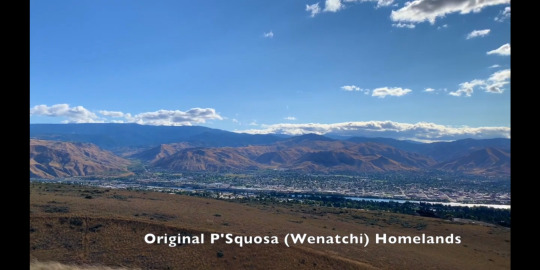
Why is this so FUCKING important?
The current reservation is the Colville Confederated Tribe reservation which is a conglomerate of TWELVE tribes. (This alone is a disgusting violation of so many treaties and some day I'll have words about what it did to my family) More importantly right now is that the Wenatchi is a non-federally recognized tribe!!! This has many implications for the preservation of their culture but also limits their access to the resources both monetarily AND on the the lands they had treaty rights to that are part of their ancestral lands. This land purchase would put many Wenatchi people back on their ancestral lands and also funds a community center so their tribe has space to practice heal and grow their community and culture.
PLEASE DONATE TO THE GO FUND ME IF YOU CAN
Their venmo is Wenatchi_LandBack
24K notes
·
View notes
Link
In the book Another Kind of Garden, the methods of Jean Pain are revealed.
He spent his entire short-lived life studying brush land and forest protection, specifically fire prevention, alongside his wife Ida. These studies led to an enormous amount of practical knowledge for composting, heating water, as well as harvesting methane, all of which are by-products of maintaining a forest or brush land with fire prevention techniques. While this knowledge is applicable in many instances, it is worth remembering that the root of all of this knowledge lies in forest preservation.
All of the activities described below are by-products of that process. The book goes into detail with the economics of such an operation. I will focus on the applications...
5 notes
·
View notes
Photo

It's time to take soil seriously. As the Intergovernmental Panel on Climate Change states with very high confidence in its latest report, land degradation represents "one of the biggest and most urgent challenges" that humanity faces.
The report assesses potential impacts of climate change on food production and concludes that rising atmospheric carbon dioxide levels will reduce crop yields and degrade the nutritional quality of food.
To avert climate catastrophe, the report warns, people need to make changes in agriculture and land use. In other words, it's no longer enough to wean society off of fossil fuels. Stabilizing the climate will also require removing carbon from the sky. Rethinking humanity's relationship to the soil can help on both scores...
https://phys.org/news/2019-08-soil-climate.html
0 notes
Photo
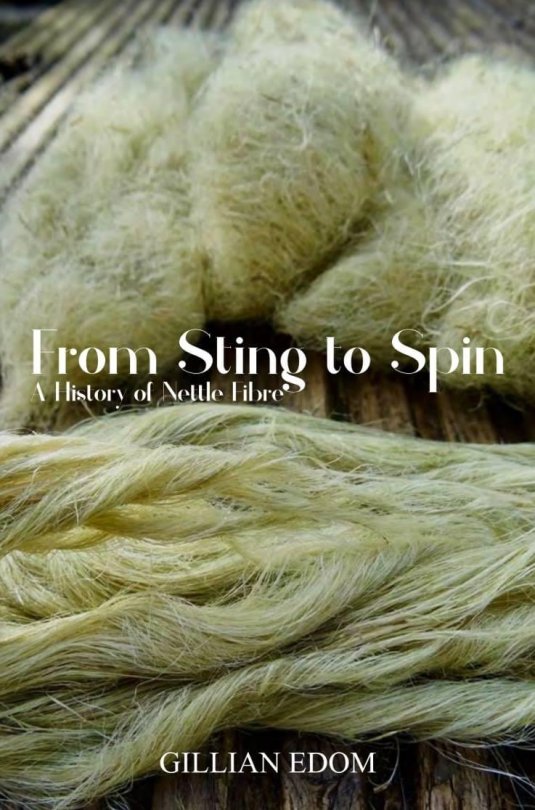
Gillian's book 'From Sting to Spin', a History of Nettle Fibre, brings together evidence how nettle fibre was used in many countries around the world from the earliest times up until the Second World War.
https://gillianedomsbook.blogspot.com/
3 notes
·
View notes
Text

Hello! Day 2 of #PermPrin the June of Permaculture Principles. The principles intersect so just starting with one:
Observation "Use protracted and thoughtful observation of natural systems rather then protracted and thoughtless labor"
This principle might be obvious, but people are always diving too quickly into naming problems or offering solutions. Just asking "what is occurring?" and spending time to see many kinds of patterns, is huge.
When you walk in the forest, the animals are aware of your presence; you create ripples of rings of effects out from your actions. The birds are noticing &changing their songs & position and the other animals notice. You are not seeing the woods: you are seeing your own impact
This is true in science, in community organizing, in looking for your car keys- you are living within the sphere of your own interference.
Mollison recommends the following:
"A child-like & non-selective approach" asking "I wonder why?”... & being curious
"A thematic approach" breaking things down into Water, Land, Birds, Paths, etc. ...
"An instrumental approach" using measurements, equipment, data collection
"An experiential approach" using all the senses. I recommend looking for patterns, for what calls you, for what you are avoiding seeing, for why patterns break or change
In order to be somewhere and not be messing with the birds, you often have to get up before the "Dawn Chorus" when the birds establish their patterns for the day. You have to get up very early and just be there and not impose your impact and just listen, with no jumping in.
(Its) essential to check with others, repeat observations that are useful for Instrumental Reason, but let's bring in "Communicative Reason": who has a different view from their experience of class, race, gender, life, etc. Listening to other observations, especially those whose observations get lost in the majority din.
& to see patterns in time & space, we must use parallax: seeing from different angles, times of day and year, contexts, levels of detail and zoom in and out.

Please know that meaning-making is often for later and gets in the way of observation. So really just looking w/out interpretation. Maybe even with just a meditative presence.
Mollison said the best tool for designers was a hammock & in the same spirit many chose a single spot to go to daily &just be: to see what birds ARE and plants ARE, and sun and wind and bugs ARE. to clear away media stories and just be with a place so often that you know it.
So that's the principle today. When you find yourself today trying to solve things, design things, act on things. Time for Protracted &Thoughtful #Observation rather then protracted and thoughtless labor. Please feel free to report moments where you used this principle here.
These principles are often somewhat obvious. But i'm looking forward to checking in with one a day
Oh I totally forgot: This is NOT just for landscape design. I'm talking about these principles used at Work, in your home, family, organizations, community. in organizing a campaign or organizing a road trip.
within the space of land design, i did a thread a while back on landscape observation, but don't forget the social, cultural, & economic spheres:

https://twitter.com/BuildSoil/status/1125649729675620352
So. Right now, even. Take a min to pause. As you are looking at these words, start to notice your breath & the tension and relaxation in your body. How are you sitting? Check in with & observe the feelings in the top of your head, face, jaw, ears, eyes, neck, shoulders, arms
breathe & notice your chest & torso, legs, feet & hands. then expand it to your sense of temperature, inside and in contact with the air & its motion.
what can you hear? listen to the sounds of machinary, birds, people, wind, can you make a 3d inner image of how it's all arranged?
As you feel and listen, can you feel your sense of up & down? north east south west? left & right? your rotational relationship w how the world is oriented, the gravity attracting you to the earth? Your center of gravity curving through spacetime to draw you in to the earth?
how's your breath?
now bring in vision, the whole picture from the very edges of all sides of your vision, the shading and light, the shapes, color & texture extending the sensation of your body to your vision, imaging the textures of all of the things in your vision, holding it all as one
now how would it feel being all of those objects at once? to be them with mass and form and history and perceiving back out to one another? Feel that web, as you notice your own body and senses, the temperature of your skin, the feeling of your jaw and back and breath.
&after reading these words, stay here a little bit deepening your connection to being all of these sensations. &when you are ready to move, maintaining that awareness as you observe moving, changing, shifting life. Keep this awareness as your bring thoughts & interactions in
Thanks again for your time and attention as we explore this stuff together
0 notes
Text

A post on coppices and pollards and how they can turn trees into powerful carbon-pumps.
#ClimateHope: Walking around old managed landscapes, you might come across trees like these–many thin trunks coming out of little stumps, or tall trees with knobby tops with a lot of small branchings popping up. These are #coppices & #pollards– they are VERY interesting. 1/?
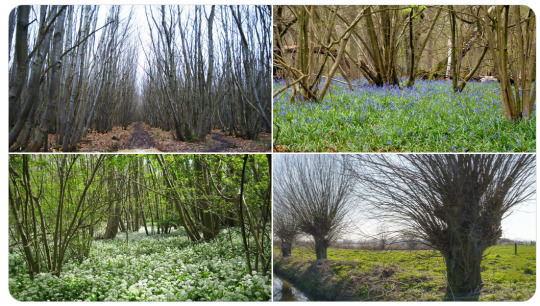
See 4 images here
They meet many needs: they grow a lot of thin poles of wood for many uses, build huge roots masses, can fit between other trees, take advantage of the fast early growth of some hardwood trees, and can sequester carbon quickly.
One can go all over the world & see this kind of relationship between people & their re-growing trees; people have done this everywhere. it’s a kind of relationship to the earth that is symbiotic & worth reconnecting with.
The concept is simple, many trees all over the world don't live very long once they get big, but when they are browsed by animals, they stay young & can live for a long time. When we coppice or pollard, we cut trees back on a regular schedule. pic from http://midwestpermaculture.com/2012/11/coppicingpollarding/
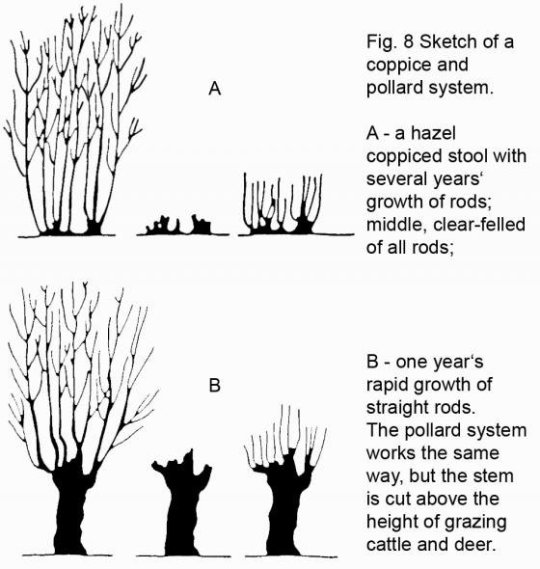
when they are taking to a stop, they dump carbon into the soil and feed their team of microorganism friends which help them feed on the materials they need to rejuvenate.
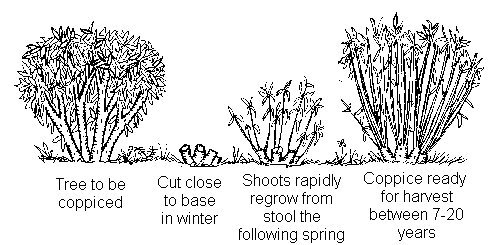
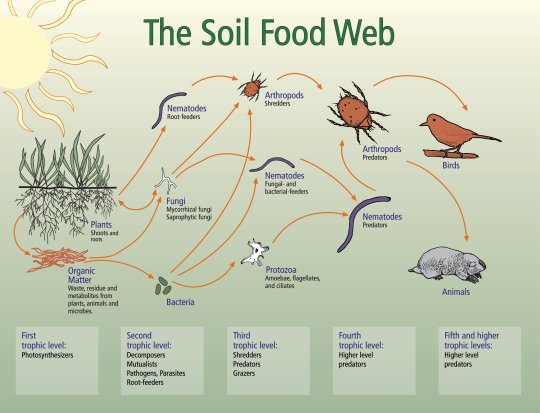
trees that don't always live vary long can become some of the oldest trees (where) there are are ancient coppices. pic from: http://bbc.in/1NvNeVF article: http://bit.ly/2QgisCP
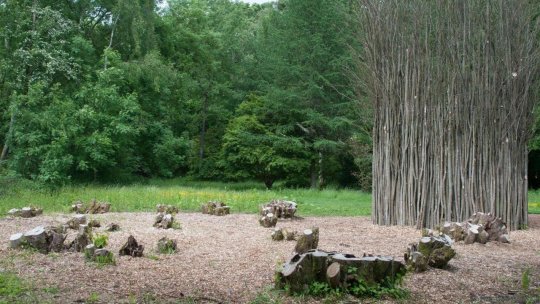
“The basic feature of a coppiced wood is taht it is cut periodically and the trees are allowed to regrow from the cut stumps, which are termed stools. The word coppice is derived from the French ‘couper’, meaning to cut. A Coppiced wood provides a self-renewing source of wood allowing an indefinite number of crops of stems to be taken. Coppiced trees can live to a great age. Some of the oldest trees in British woods are coppice stools which may be more than 1,000 years old. Traditionally a wood contains coppiced trees (underwood) and scattered timber trees (standards). In an actively coppiced wood an area of the underwood is cut each winter. The names given to such an area of felled coppice differ from one part of England to another, but they include (X), fell, coupe, sale and burrow, while in Scotland and northern England the term is hagg. Within a single wood, coppicing usually gives rise to an irregular patchwork of panels and different stages of growth. Panels typically range in size from half to three hectares. Occasionally, coppicing is conducted in a more regular fashion, with an equal0sized area being cut each year, or even with the entire wood being coppiced at intervals.
-Transcribed from Image (LINK)
it's weird, pollarding has been a part of gardens where people just like to look like they are English lords and it can be done just for appearance. the purpose is to have pollards that are out of reach of animals and livestock.
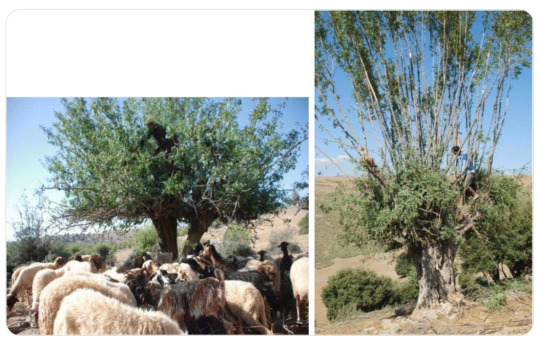
(2 images linked here)
Having found the power of these amazing trees, we can also point into the direction of how so many cultures also see this as a sacred cycle of death & renewal. There are traditions all over of the World Tree that is coppiced at the end of time ®rows. For ex, from the Norse: 8/
An ash I know, | Yggdrasil its name, With water white | is the grat tree wet; Thence come the dews | that fall in the dales, Green by Urth’s well | does it ever grow
Thence come the maidens | mighty in wisdom, Three from the dwelling | down ‘neath the tree; Uth is one named | Verthandi the next,- On the wood they scored,- | and Skult the third. Laws they made there, and life allotted To the sons of men, and set their fates.
-- Völuspá stanzas 19 & 20
(See 2 more images here)
But so many cultures understand how to renew the plants and land in their lives and they connect then with the large cycles of renewal, the potential that things could lead from ego to world chaos, and the ability to be part of the dance of being a part of maturity with nature
How then do we bring back lessons? What can be done in the world with reconnecting with this knowledge?
Well, one thing we get is very straight poles, whips, sticks of whatever size we manage for. Baskets, tool handles, chairs, houses, fuel, charcoal, (some pictures from the amazing Ben Law)
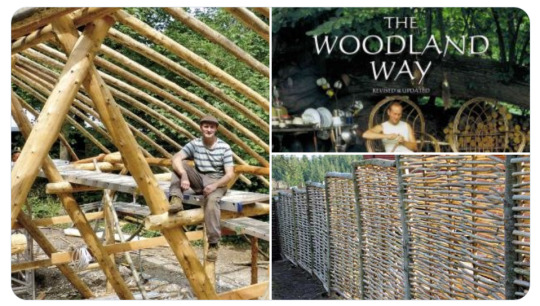
but unlike some forestry, you are not just taking and leaving destruction in your wake, you are leaving living roots in living soil. You are keeping the integraty of relationship.
@DaveJacke is working on a coppice book & has returned w/ many important examples. Turns out species used for Christmas Trees are coppicable, so someone doing this kind of management can sell the trees, fund their project, then cellect them for other uses.
Unbroken Circle posted by DaveJackie to youtube.
“Christmas trees can resprout after cutting! This farm in Massachusetts has cut multiple Christmas trees off the same seedlings they planted 50 years ago...”
And, returning to our homes, communities, neighborhoods, towns, I bet we could turn a lot of our streets, parking strips, highways, yards, parks, campuses, &c towards this amazing tactic for building a lot of carbon-rich wood fast for many uses.
So thanks for coming along, we can work on this together, to coppice the plants we already have, to plant more, to shift to living with the carbon-flows of the biosphere, to change ourselves in the process& to engage directly with restoring the balance of the atmosphere.
And I wonder, as you go about your daily life if you see some trees that might be coppiced, do they already grow with that pattern? what would it mean to turn our places into carbon pumps? where could you and your community reconnect with the vegetation right around you?’
here is an informative talk by @davejacke again though it is not the best sound and picture quality
Coppice Agroforestry with Dave Jacke on youtube
“A presentation by Dave Jacke, co-author of Edible Forest Gardening, on Coppice Agroforestry. Recored at NH Permaculture Gathering Aug 23, 2014″
oh and here is his website that i think will eventually lead to the book when it's finished: http://coppiceagroforestry.com there is a good blog as part of it too
4 notes
·
View notes
